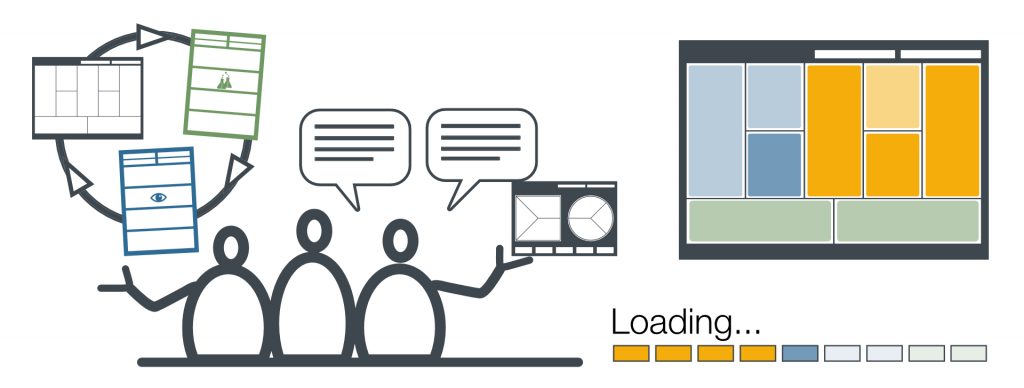3. March 2023
Mastering Jobs to Be Done – A framework for more than just product development
In the contemporary economic landscape, a fierce competition prevails, and it has become imperative for businesses to continuously enhance their offerings, be it products, services or even their business models, to stay relevant and competitive. To create a prosperous product or service, it’s crucial to comprehend the demands and prerequisites of our patrons. Achieving a deep understanding of our customers’ needs will allow us to cater to their requirements effectively and build long-lasting relationships with them. By taking the time to study their wants and pain points, we can develop solutions that are not only efficient but also exceed their expectations. Ultimately, this approach can lead to increased customer satisfaction, loyalty, and business growth. A proficient approach to fulfilling these necessities is by implementing the Jobs-to-be-Done (JTBD) methodology. This piece of writing aims to elucidate the concept of the JTBD methodology and provide guidance on its effective implementation.

What is the jobs-to-be-done method?
The Jobs-To-Be-Done (JTBD) methodology is a pragmatic approach to developing products that is rooted in understanding the fundamental desires and necessities of our customer base. Understanding a customer’s objective (job) with a product or service and moulding it to achieve the desired outcome better than other solutions is the crux of the matter. The Jobs-to-be-Done (JTBD) approach doesn’t presume that customers purchase a specific product or service. Rather, it focuses on the job that customers are trying to accomplish. The JTBD approach recognises that customers don’t buy products for the sake of owning them, but because they have a particular task or job to complete, and they believe that the product will assist them in achieving that goal. The JTBD approach prioritises the customer’s requirements over the product or service being offered, allowing businesses to provide more effective solutions that meet their customers’ needs.
How does the JTBD method work?
The JTBD method consists of four steps:
- Identify the job that customers want to do.
- Understand the context and the constraints in which the job is done.
- Develop a product or service that empowers customers to surpass the performance of existing alternatives and achieve their objectives more effectively according to their own subjective standards.
- Align your marketing to the context and the customers job to be done.
In order to identify the specific jobs to be done that a customer wishes to accomplish, we need to have a clear understanding of their goals and duties. By comprehending their objectives and responsibilities, we can accurately determine the job that needs to be completed to help them make progress. For this purpose, we can conduct interviews with customers, carry out data analysis or collect customer feedback. In order to understand the context of the job, we need to understand the situation of the customer in which the job is done. For example, we could examine the customer’s environment, the tools or devices he uses, or the other people who interact with him. After all, we have to develop a product or service that can fulfil the customer’s job in the best possible way. Above all, however, the product or service must help to fulfil the job better in certain situations than the solutions previously “hired” by the customer in order to have a relevant chance of success on the market.

Why is the JTBD method important?
The Jobs-to-be-Done (JTBD) methodology is of significant importance as it provides us with an enhanced comprehension of the wants and necessities of our clientele. This allows us to create and offer products or services that cater to their specific requirements. Put simply, the Jobs-to-be-Done (JTBD) approach empowers us to create offerings that are in line with the customer’s viewpoint, thus enhancing the likelihood of their contentment and dedication to our brand. Put simply, the Jobs-to-be-Done (JTBD) approach empowers us to create offerings that are in line with the customer’s viewpoint, thus enhancing the likelihood of their contentment and dedication to our brand.
A JTBD framework saves time and money
A well-defined framework based on the Jobs to be Done (JTBD) methodology, which encompasses research management, value proposition, and business model design, can yield significant time and resource savings for organizations. The Innovation Framework of Oberwasser Consulting is such a process. The framework provided enables companies to concentrate on their customers’ demands and necessities and craft efficacious strategies for product development and innovation. Our methodology is of such exceptional quality that we offer a guarantee on it without hesitation! If you’re interested in learning more about how we can assist your company in implementing JTBD, reach out. Feel free to call us directly: +49 221 16841669

The Oberwasser Consulting® Innovation Framework consists of six steps:
- Team Alignment: To start with, we should establish a shared language and comprehension of customer requirements to guarantee that the entire team is in sync and there are no ambiguities.
- Jobs-to-be-Done Research: We identify the needs and requirements of customers by performing Jobs-to-be-Done Research. The framework of The Wheel of Progress® (WoP) helps us ask the right questions and use the right methods to gain valuable insights.
- Categorisation and assessment: Our approach involves determining the research outcomes that hold the most significant practical value for the organisation. We then use these outcomes to construct a prototype of The Wheel of Progress®, which is tailored to the specific field. This prototype serves as a blueprint for fostering innovation and refining the business model. This ensures that everyone in the company can align their own work area with customer jobs in a practice-oriented manner.
- Business model exploration: We develop ideas and testable hypotheses for business models, individual business model building blocks or channel phases based on the needs and requirements of customer jobs. The Wheel of Progress® Canvas and a decision matrix help to quickly and safely recognise what should be implemented with what priority and what should be tested, as well as to manage an innovation backlog.
- Prototyping: We develop prototypes that meet the needs and requirements of customer jobs. The Build-Messure-Learn-Cycle system helps us to quickly and effectively develop prototypes that very efficiently improve the ROI of established business models and lead innovation to success significantly faster.
- Controlling and empowerment: We support and enable people in companies to take over and control their own innovation process, as well as to continue them permanently and successfully align themselves with customer jobs, regardless of our support.
Resume
The Jobs-to-be-Done method is an effective method of product development based on the needs and requirements of customers. A structured JTBD-based innovation process that involves research management and includes both value proposition and business model design can substantially help companies develop successful products and services and compete. The Oberwasser Consulting® Innovation Framework is one such process and can help companies develop effective product development and innovation strategies.
